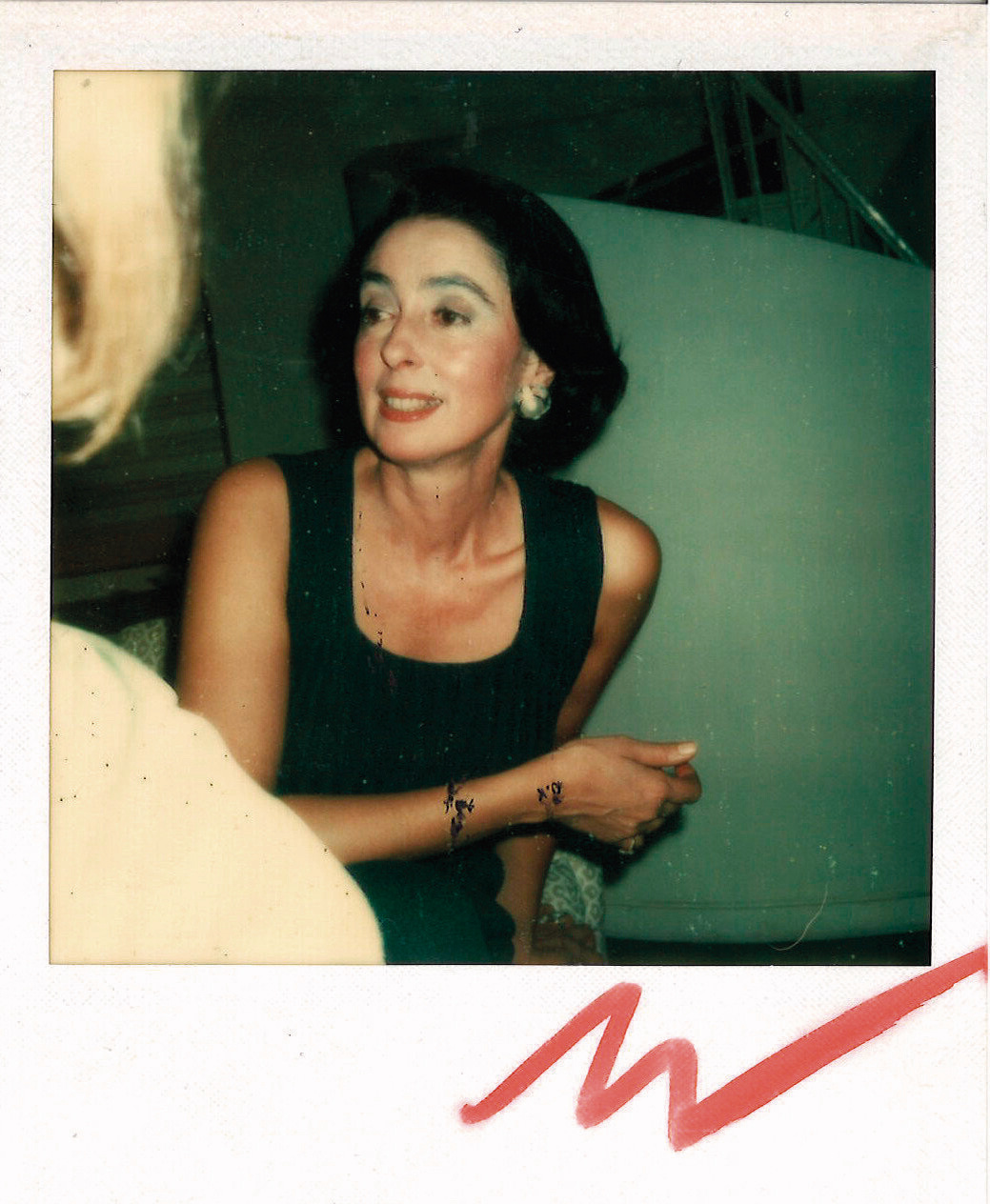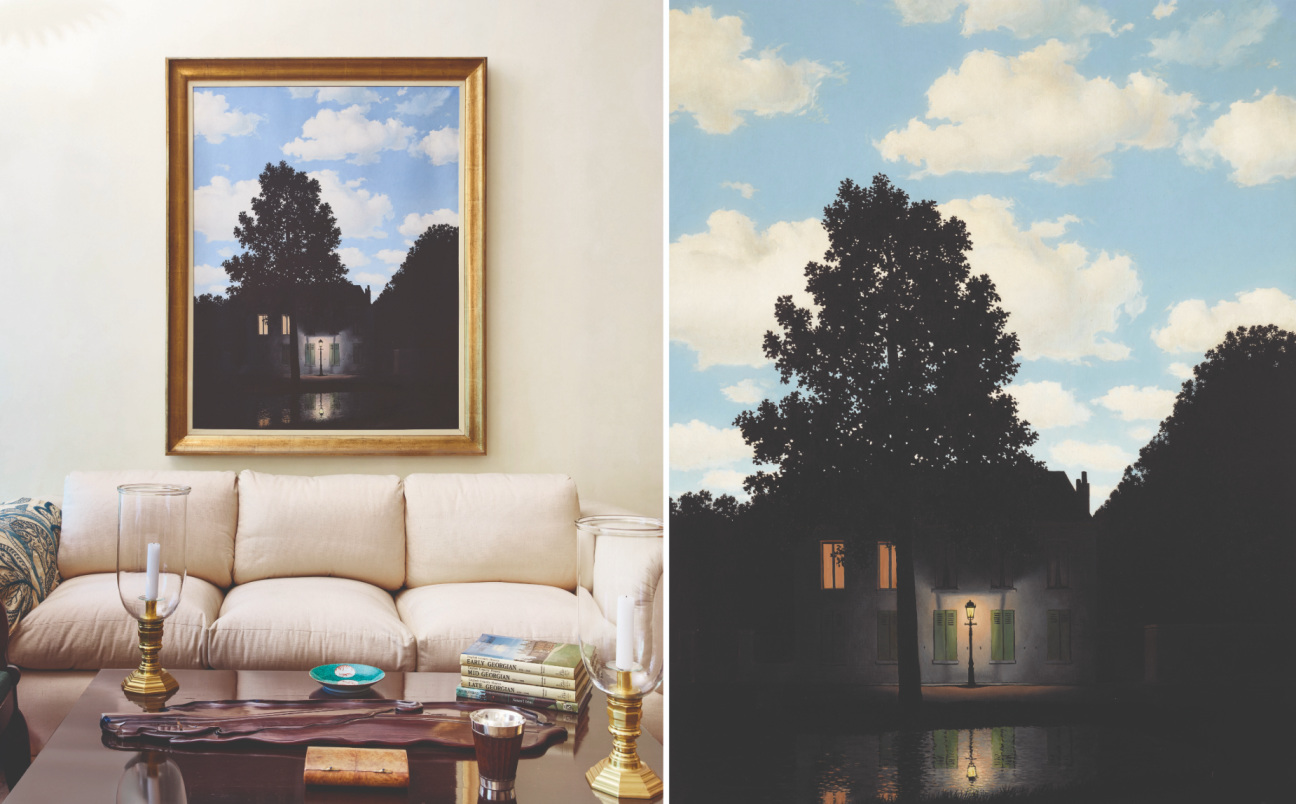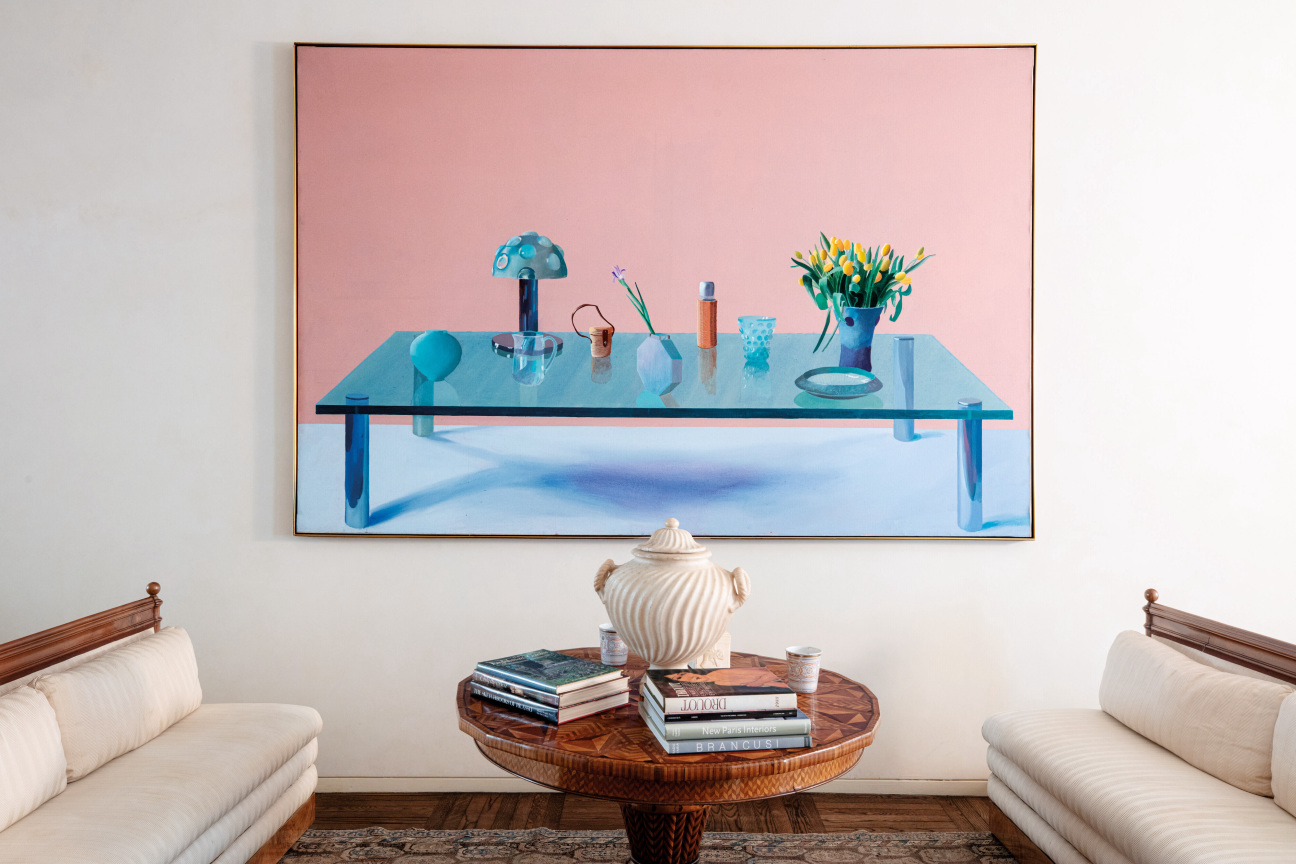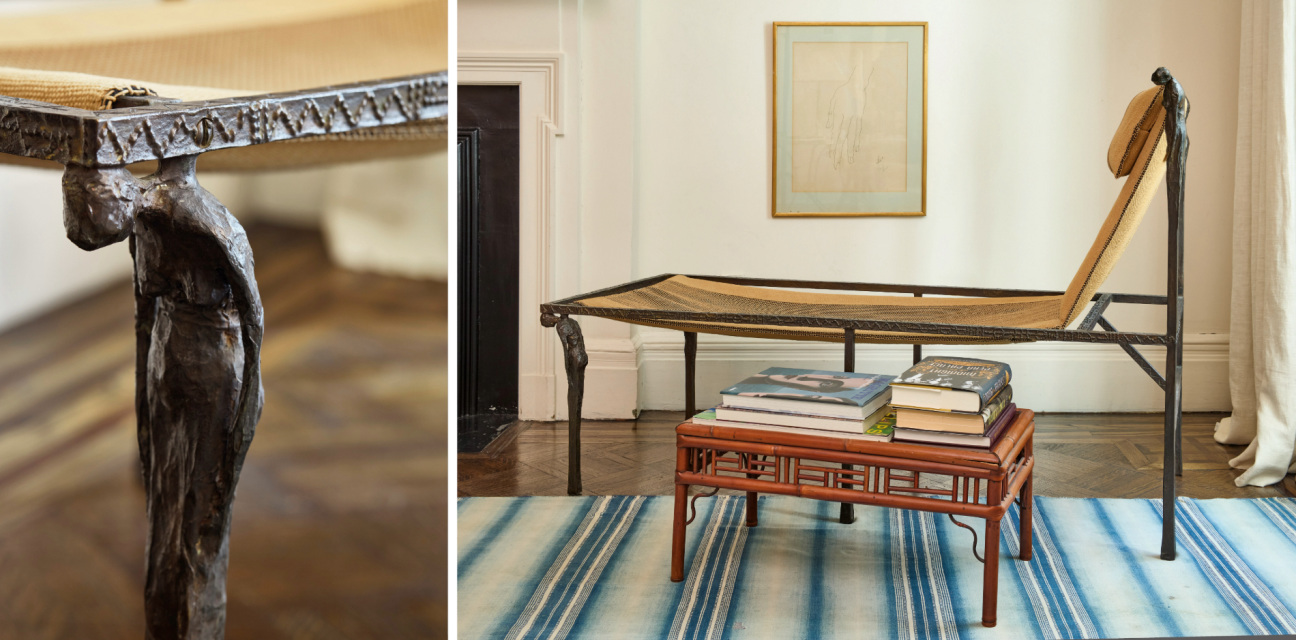
In 1978, The New Yorker published a monumental profile—seven years in the making and split across two issues—of music legend and Atlantic Records’s co-founder Ahmet Ertegun and his dashing Romanian-born wife, Mica. The couple is portrayed lavishly as the center of a new international jet set, orbited by the likes of Mick Jagger, Andy Warhol, and David Hockney. Diana Vreeland is quoted as saying, “I had them to dinner before anyone you know had them to dinner.” You can almost hear the fashion oracle purr as she searches for the right word to describe the moment. “It was the energy. Of course, it was the energy.”
Mica Ertegun, without a doubt, had energy in spades. In 1967, not content with the dawdling socialite wife image, she launched her interior design firm MAC II with her friend, Vogue editor Chessy Rayner. (MAC was an acronym of "Mica and Chessy.”) Among their first projects, the designing women redid the residences of the Rolling Stones’s Keith Richards, American painter Kenneth Noland, and the fashion designer Bill Blass. “There aren’t any two girls in New York more on the ball, with more of a flair for food, for clothes, for living, than Mica and Chessy,” Blass once gushed to Vogue.
The duo’s early work saw them revamp New York’s Carlyle Hotel and Saks Fifth Avenue's famed fifth floor, where they injected a smart, froufrou-free modernity that became their signature style and, one could argue, prefigured the quirky minimalism of today. “I prefer simplicity,” Ertegun told Vanity Fair in 2017. “I hate things that are rich and ugly.” After Rayner’s death in 1998, Ertegun continued the company, bringing her discriminating, indefatigable eye to the residences of the highest-profile names in art, society, business, and finance.
Her tastes in design dovetailed with an affinity for art collecting. She provided ample space in the couple’s homes in Manhattan, Southampton, Paris, and Bodrum—a dilapidated, roofless stone structure on the coast of Ahmet’s native Turkey that Ertegun transformed into a sumptuous retreat for their illustrious crew—to showcase the exceptional works they’d acquired. They bought with abandon, amassing examples by some of the brightest lights of the modern era: René Magritte, Sonia Delaunay, Joan Miró, Ellsworth Kelly, Ed Ruscha, and so on.
Ertegun died in December 2023 (17 years after Ahmet) at the age of 97, having worked well into her final years. Christie’s has organized a marquee series of auctions in New York beginning Nov. 19—three live and two online—with a portion of the proceeds going to the cultural philanthropies and preservation programs the Erteguns championed. Combined, the five sales are expected to bring in as much as $158 million in the first day alone, spanning the art, furnishings, decorative objects, and jewelry that meant the most to her—emblematic mementos of a most gracious time on earth.
Below, CULTURED has scoured the collection for five highlights you should be paying close attention to.

René Magritte's L’Empire des Lumières, 1954
With an estimated value in excess of $95 million, the star of the Mica Ertegun auctions—and the fall auction season at large—is L’Empire des Lumières, a Surrealist painting by René Magritte from 1954. According to Christie’s, the work depicts a “paradoxical Surrealist scene” in which day and night are occurring simultaneously. The Erteguns purchased the canvas in 1968 and displayed it in their Manhattan home. It’s the grandest of several Magritte pieces to go under the hammer and is expected to set a new record for the artist.

David Hockney's Still Life on a Glass Table, 1971
David Hockney’s forlorn Still Life on a Glass Table, 1971, is a tribute to lost love. Each item on the table belonged to the artist’s former partner Peter Schlesinger. It paved the way for his landmark farewell to Schlesinger in Portrait of an Artist (Pool with Two Figures) a year later. This work, acquired by the Erteguns in 1975, is expected to garner between $15 million and $20 million.

Patrick Henry Bruce's Peinture/Nature Morte, 1928
Patrick Henry Bruce’s still life, Peinture/Nature Morte, 1928, is a prime example of early American Modernism. Only 25 works from the series exist, five of which remain in private hands (including Ertegun’s). The rest are held in such august institutions as the Metropolitan Museum of Art and the Museum of Modern Art in New York. It is estimated to sell for between $500,000 and $700,000.

Ingrid Donat's Caryatides chaise longue, 2001
The Caryatides chaise longue, 2001, by the contemporary French designer Ingrid Donat, pays homage to the sculpted female figures that served as structural columns in ancient Greek temples. Its high estimate is $30,000.

Group of 11 works presented to Mica and Ahmet Ertegun for their contributions to music, 20th and 21st centuries
Not everything from the collection will set you back five or six figures. The online sales include books and printed materials like this bundle devoted to the Erteguns’s contributions to music. Included is Bette Midler’s 1980 autobiography A View From a Broad, inscribed by the author, and a music score signed by Wynton Marsalis with a letter thanking Mica Ertegun for her lifelong support of Jazz at Lincoln Center. (In 2015, she donated $9 million to a redesign of the center, resulting in the Mica and Ahmet Ertegun Atrium.) Collectively, these 11 personalized works may yield $1,000–$1,500.










 in your life?
in your life?

